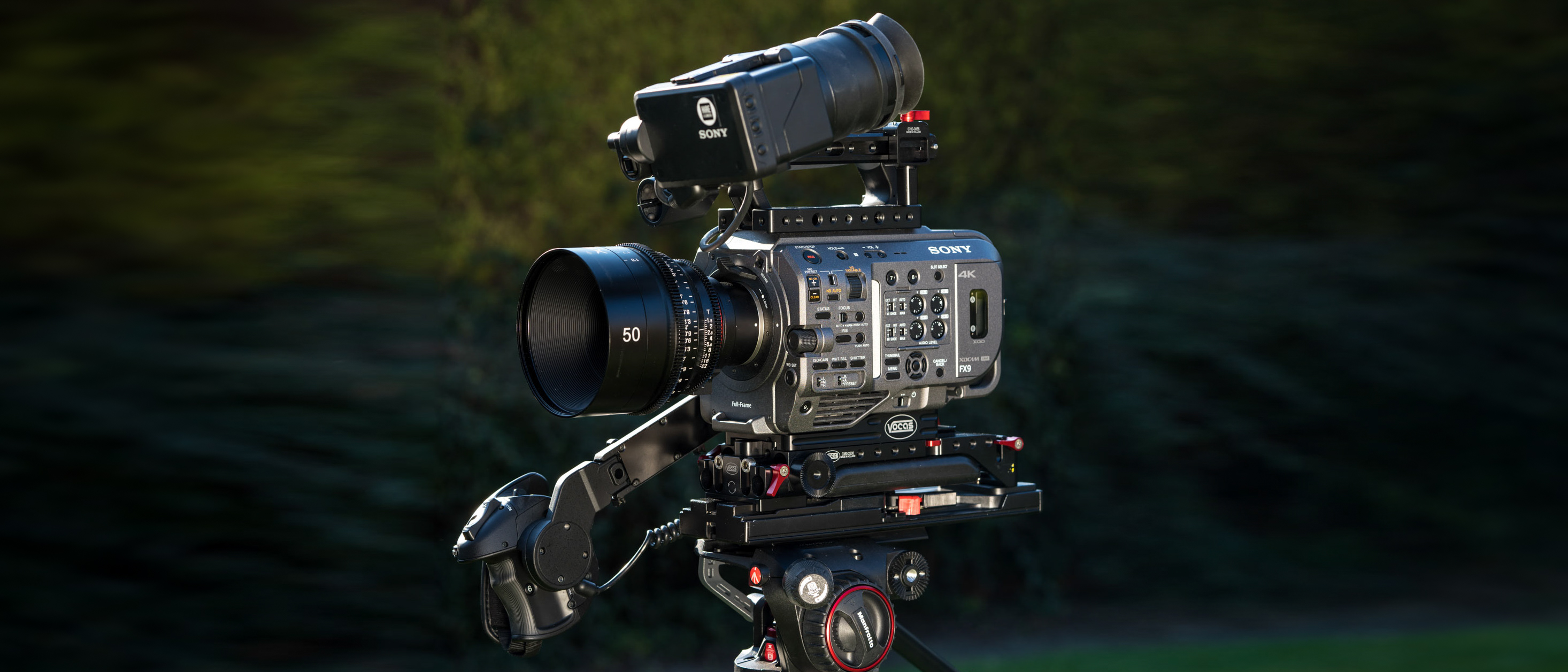Digital Camera World Verdict
If you love the form factor and usability of a real cinema camera for shooting video but have stuck with mirrorless due to the full-frame sensors and advanced AF, then Sony now has the camera for you. The FX9 has all the professional controls of a real video camera such as XLR audio inputs and large battery life, and adds in a full-frame sensor and hybrid AF from the Alpha mirrorless series. It also mixes in the glorious color science of Sony’s high-end Venice motion picture camera and a dual native ISO sensor for amazing low light performance. Although it has a 6K sensor, the FX9 downsamples this signal to C4K and does not offer internal Raw recording, unlike its 5.9K rival, the full-frame Canon EOS C500 Mark II. But the FX9 is significantly cheaper, and unlike the Canon offers 180fps for super slow-motion, albeit in HD only. But if you are looking to move up to a full-frame cinema camera from a Super35mm camcorder, or want the user-friendly features that a mirrorless camera can never offer, the Sony FX9 is a stunning performer. It might be $11,000 body only, but is the cheapest full-frame cinema camera you can buy.
Pros
- +
Most affordable full-frame cinema camera
- +
Fast 180fps for slow motion in HD
- +
Advanced hybrid AF and digital audio
Cons
- -
No internal Raw recording
- -
No touch-to-focus screen
- -
XQD cards can be pricey
Why you can trust Digital Camera World
The Sony PXW-FX9, or the Sony FX9, for short is a serious full-frame video camera that, despite its price, offers great value for serious videographers. Sony, of course, knows a lot about what serious filmmakers need – as proven by the popularity of its FS7 camera that has been a smash hit since its launch. It’s been the mainstay of many independent production companies all over the world, thanks to its Super35mm sensor, fast frame rates and great image quality. But time and technology has moved on, and the most discerning cinematographers now want a full-frame sensor ideal for high ISO performance and shallow depth of field, along with a useable AF system that uses phase detection and is hugely customizable. Live streaming is also far more important than ever, and for those who want to grade the footage to within an inch of its life, internal Raw recording is the way to go.
Sony’s answer is to make a super-advanced version of the FS7 with its stepless built-in ND filters, long battery life, professional connections such as SDI and XLR audio inputs and great ergonomics. Then use a backside-illuminated, full-frame sensor and the super-advanced hybrid autofocus system from the Alpha mirrorless cameras.
For even better control of noise, Sony added Dual Base ISO 800/4000 and S-Cinetone color science from the upmarket Venice cinema camera which costs around three times as much. For a body-only price of $11,000 body only, the FX9 is not on sale at bargain basement prices but it is the cheapest full-frame cinema camera on the market.
And it’s a lot cheaper than the rival $16k, full-frame Canon EOS C500 Mark II that came out at the same time with a spec that’s startlingly similar in many ways. The Canon offers 5.9K recording while the Sony has a 6K sensor but records in 4K as it downsizes the footage by oversampling. Where the Canon really does have the upper hand is that it offers Canon Raw Light internal recording, while the Sony doesn’t record Raw internally at all.
To get Raw from the Sony, it’s in the full-size 16-bit flavor and you need the $2500 Sony XDCA-F9 extension pack. This pack adds bulk but also has a V-lock battery slot, DWX digital audio for broadcast use, ethernet and improved streaming connectivity.
So the Canon offers interchangeable lens mounts, 5.9K recording and internal Cinema Raw Light. The Sony is 4K only with no internal Raw options, but does have higher frame rates and costs significantly less. You pay your money and take your choice….
Sony FX9 specifications
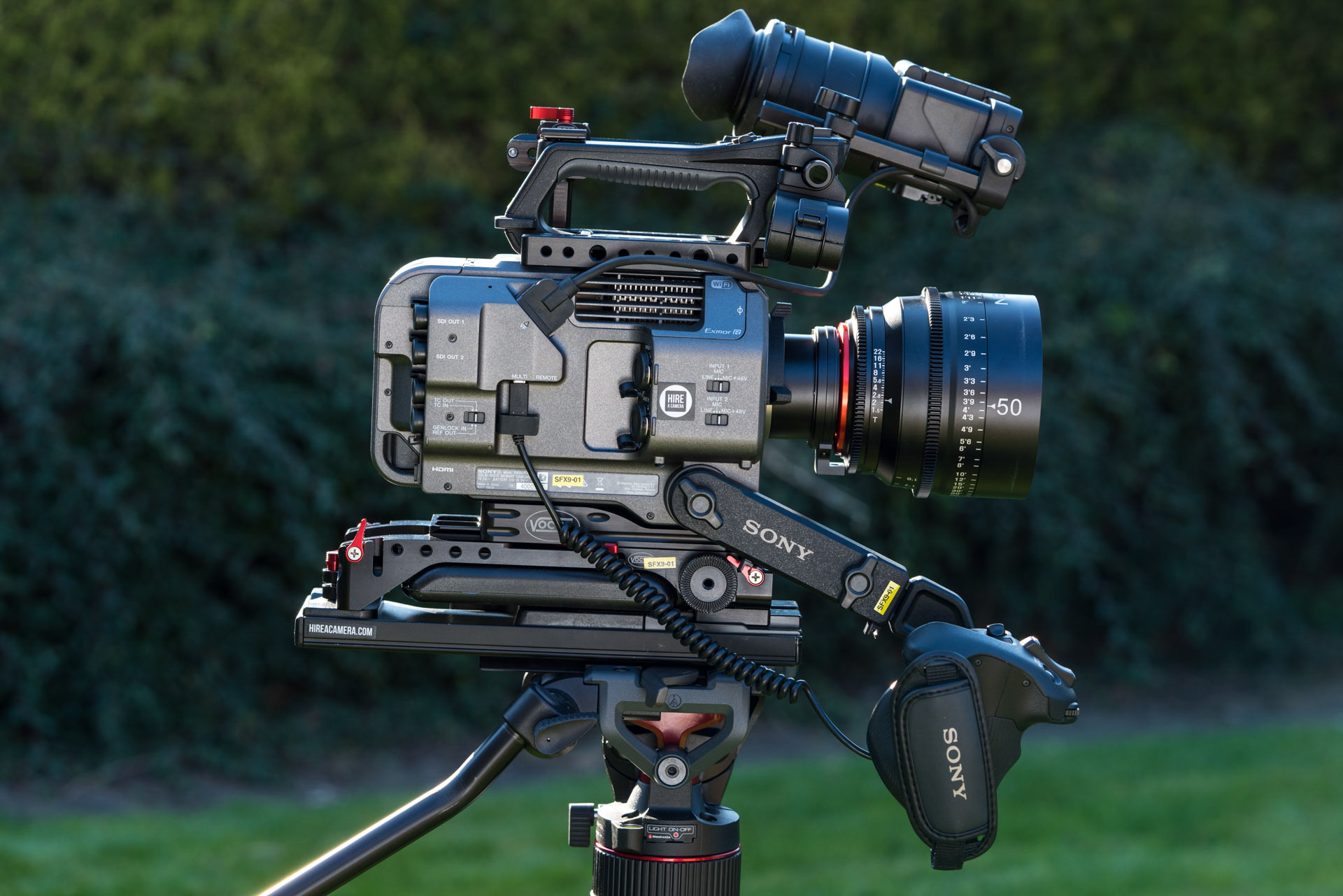
Model number: Sony PXW-FX9
Sensor: 20.5-megapixel full frame Exmor R backside-illuminated CMOS
Video formats: 4096x2160 C4K, 3840x2160 4K, 2048x1080 2K, 1920x1080 FHD, 1280x720 HD. Codecs: XAVC-I 10-bit 4:2:2 600Mbps, XAVC-L, 8-bit 4:2:0 150Mbps, MPEG 8-bit 4:2:2, 16-bit Raw via XDCA-FX9 and external recorder
Frame Rates: 59.94/50/ 29/.97/ 25/ 23.98fps for C4K, 4K, HD. 120fps/180fps HD and 4K/ 120fps (external)
Gamma curves: S-Cinetone, Std, HLG, S-Log3
ISO: Dual Base ISO 800/4000
Dynamic Range: 15+ stops
Autofocus: Hybrid AF; 561 phase detection points covering 94% of sensor. one shot, continuous, face priority, eye tracking
Lens Mount: Sony E
Controls: Peaking, waveform, zebras, focus assist
Shutter speed: 1sec – 1/8000sec
Filters: Stepless variable ND 1.4 – 1/128
Memory card: 2 x XQD slots, 1x SD data slot
LCD: Fully articulating 3.5in LCD, 2.76 million dots
Connectivity: Wi-Fi, Bluetooth, BNC 12G-SDI, BNC 3G-SDI, HDMI-A
Size: 146x142.5x29mm
Weight: 2kg (body only)
Key features
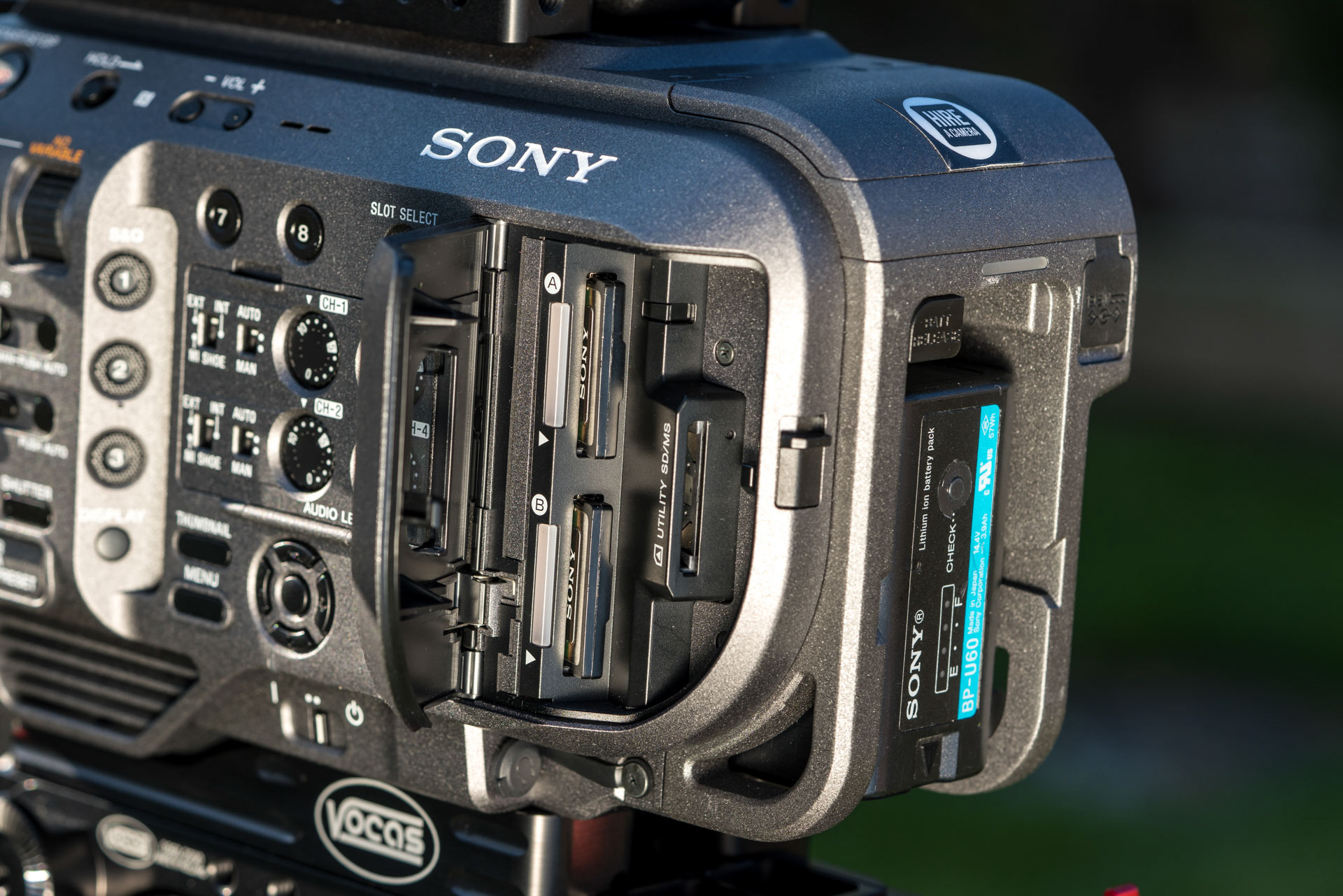
The Sony FX9 is a full-size cine camera that may seem lacking in resolution compared to even its mirrorless rivals as it only records in 4K rather than 5.9K or even 8K. But Sony claims the way to get the best 4K is to use a 6K sensor, then downsampling the signal which gives the best sensitivity, noise and dynamic range of more than 15 stops. And it also means some of the pixels can be used for the advanced on-sensor phase detection autofocus.
On a typical 4K sensor, when the signal is processed by the camera it actually gives resolution approximately equivalent to 3K – even though the file size is 4K. The FX9 resolution and size is true 4K, and it produces far cleaner and more detailed files.
The FX9 uses a new, 6006x4949 24.5-megapixels 6K HDR sensor which records internally in up to C4K, 4:2:2 10-bit in XAVC-I at 600Mbps. There’s also the more compressed Long GOP XAVC-L in 8-bit 4:2:0 at 150Mbps for a smaller file size, and MPEG 8-bit 4:2:2. So you have a lot of choices of codecs to suit your project.
The camera can record up to DCI 4K internally at up to 30p full frame or 60p with a small crop. And super slow motion of 120fps or 180fps is in 2K full-frame or 120fps with a Super35 crop. When recorded externally via Raw to the XDCA-FX9 unit, it can output up to 180fps in 4K full-frame or 120fps in 4K or HD with a Super35 crop.
But if you use the camera’s S&Q mode for slow or fast motion capture, the camera loses all autofocus functions. One way around this is to change to 50p or 60p as your base setting, and slow it down in post to get half-speed slow motion. And any faster frame rates than that and you’re out of luck in terms of AF. This is a shame as the Sony A7S III offers 240fps in HD or 120fps in 4K with full AF.
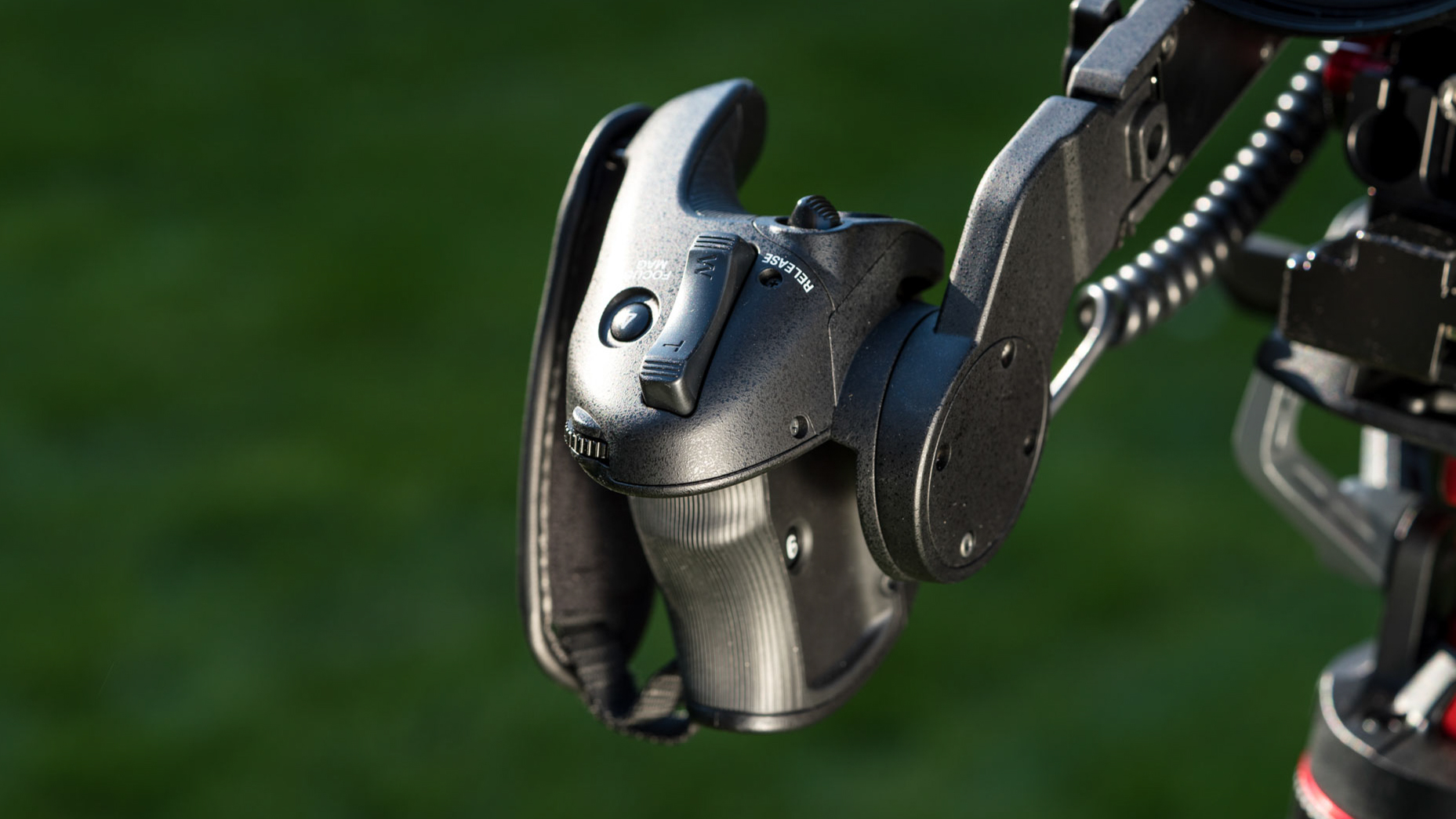
The new sensor uses the Dual Base ISO system which changes how the sensor gathers light and also the spread of dynamic range. If you use the low base ISO 800, there are the same number of stops of range above and below mid-grey to capture highlights and shadows. When you switch to the high base ISO of 4000 to use in low light, there are five stops above mid grey and tens tops below to retain more shadow detail. So the sensor responds differently in each of the base ISO settings, even if the ISO you have set is the same.
So in base ISO 800 then actual shooting ISO 1600, the noise in the shadow areas is worse than if you set base ISO 4000 and actual ISO of 2500. So it’s best to set the low base ISO 800 for bright light, then if you need to go over 1600 then switch to high base ISO 4000.
However, the base ISO changes at different gamma settings. One way to avoid confusion is to switch the ISO mode to Gain instead. So in whichever colour settings you use, 0dB is running at base ISO.
The FX9 allows you to shoot XAVC-I files at up to 60p while making a proxy recording in Mpeg 422 HD, so you can edit the proxy then replace with the XAVC files at the end of the project. You can also bake in a LUT and output it over the 12G-SDI in 4K/60p 4:2:2 10-bit which allows you to record 10-bit ProRes externally to a suitable recorder. And the camera now has a built-in intervalometer.
And there’s a picture cache recording function, where the camera will record before the Rec button is hit. It’s ideal for wildlife, when you can’t predict when an animal will move, for example. The amount of time pre-recorded varies due to the settings but is up to 28 seconds for HD and 4 seconds in 4K. Unfortunately there is no built-in anamorphic desqueeze but you can use anamorphic lenses and see results with the right external monitor.
Sony FX9: Build and handling
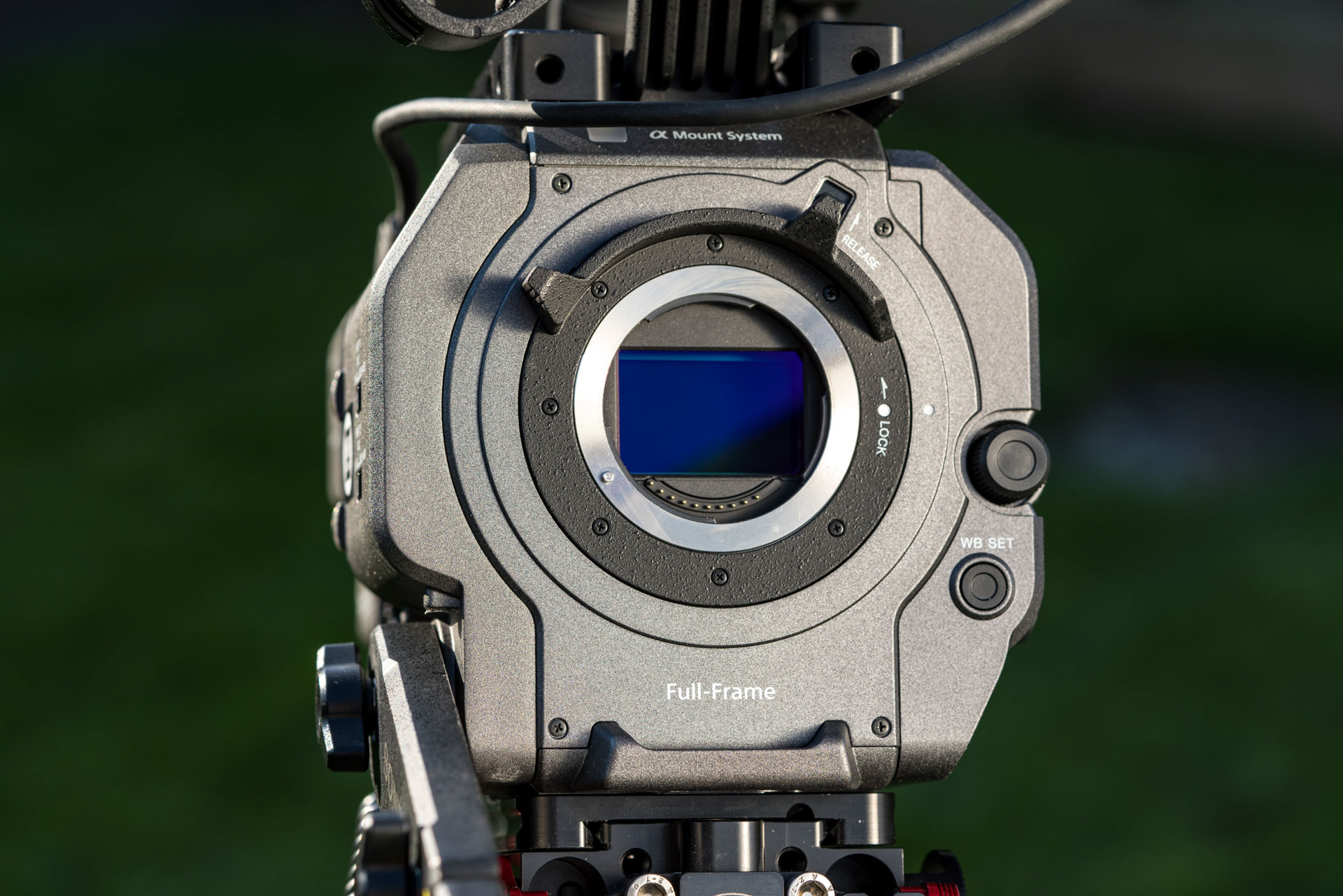
Sony has taken what is has learned from the FS7 and made key changes to the FX9. With a solid all-metal body and the locking E-mount system where you don’t have to twist the lens when you fit it, the FX9 is sturdy and reliable. Also improved is the weatherproofing and latch for the memory card compartment, which has two XQD card slots and an SD card for proxies or loading up settings.
There are ten user-settable buttons to program in you most-used settings. All the buttons with auto modes now have LED lights which let you know they’ve been activated.
The main menu scroll wheel has been replaced by a touchpad system on the left side of the camera which is simple but a bit too easy to click at the wrong time. There is a large multi-function knob at the front of the camera for scrolling through and setting menu items.
The viewfinder is all new, and has higher resolution of 720p, with improved contrast and colour. And the camera has the Sony MI shoe which communicates with Sony accessories, including the new digital audio system. This is a big selling point as the shoe allows you to fit Sony’s whole range of wireless audio systems which communicate perfectly with the camera. There are no external cables needed, and the wireless unit can be powered directly from the camera battery.
The FX9 is the first full-frame camera to use Sony’s Electronic Variable ND filter which you can switch between stepped ND stops or variable ND. You can also use auto ND, which uses the camera’s auto exposure to tweak the ND, while allowing you to keep your shutter speed and aperture constant.
The FX9 uses Sony’s advanced AF system that uses 561 points across 94% of the width and 96% height of the imaging area. This is a very advanced system that is similar to the A7-series Sony mirrorless cameras so you can set AF transition speed and AF subject shot sensitivity. Then there’s the focus area, from a wide to tight, and flexible spot for the most precision. You move these areas around using a toggle switch but there is no touch-to-focus touchscreen.
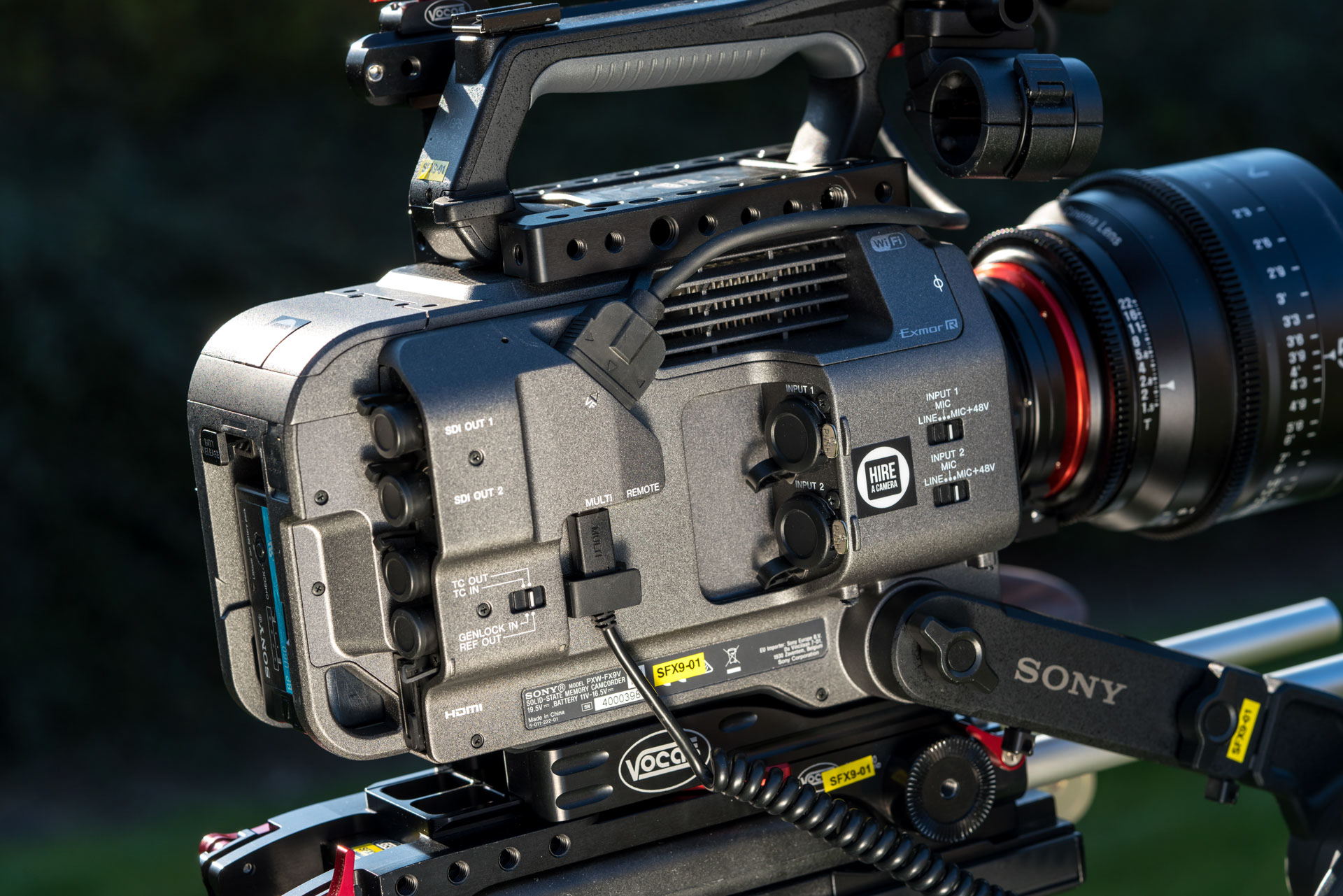
There is also Face and Eye Detection, and Face Priority. For manual focus, where the FX9 has improved focus tools such as a 3x and 6x punch-in focus magnifier and focus peaking which is fully customizable.
The FX9 has in-camera image stabilization using a built-in gyroscope that records metadata for every shot, then post production takes out any wobbles. You can set how much image stabilization you want but you have to use Sony’s Catalyst Browse/Prepare software to do it. Or alternatively, stabilized Sony lenses are the way to go.
The FX9 has built-in WiFi and can be controlled with a smartphone using Sony’s Content Browser Mobile. The WiFi can also be used to upload files to FTP or low-res proxy footage for news broadcast use. There’s also an ethernet port for wired streaming or FTP transfer of files.
The FX9 allows you to change shutter speed to shutter angle and leave it at 180 degrees, then the shutter speed will always be double the frame rate. Anything to avoid digging into the Sony menus which have been simplified, with many of the commonly used settings grouped together. But they are still complicated compared to rivals or even the new Sony A7S III.
Sony FX9: performance
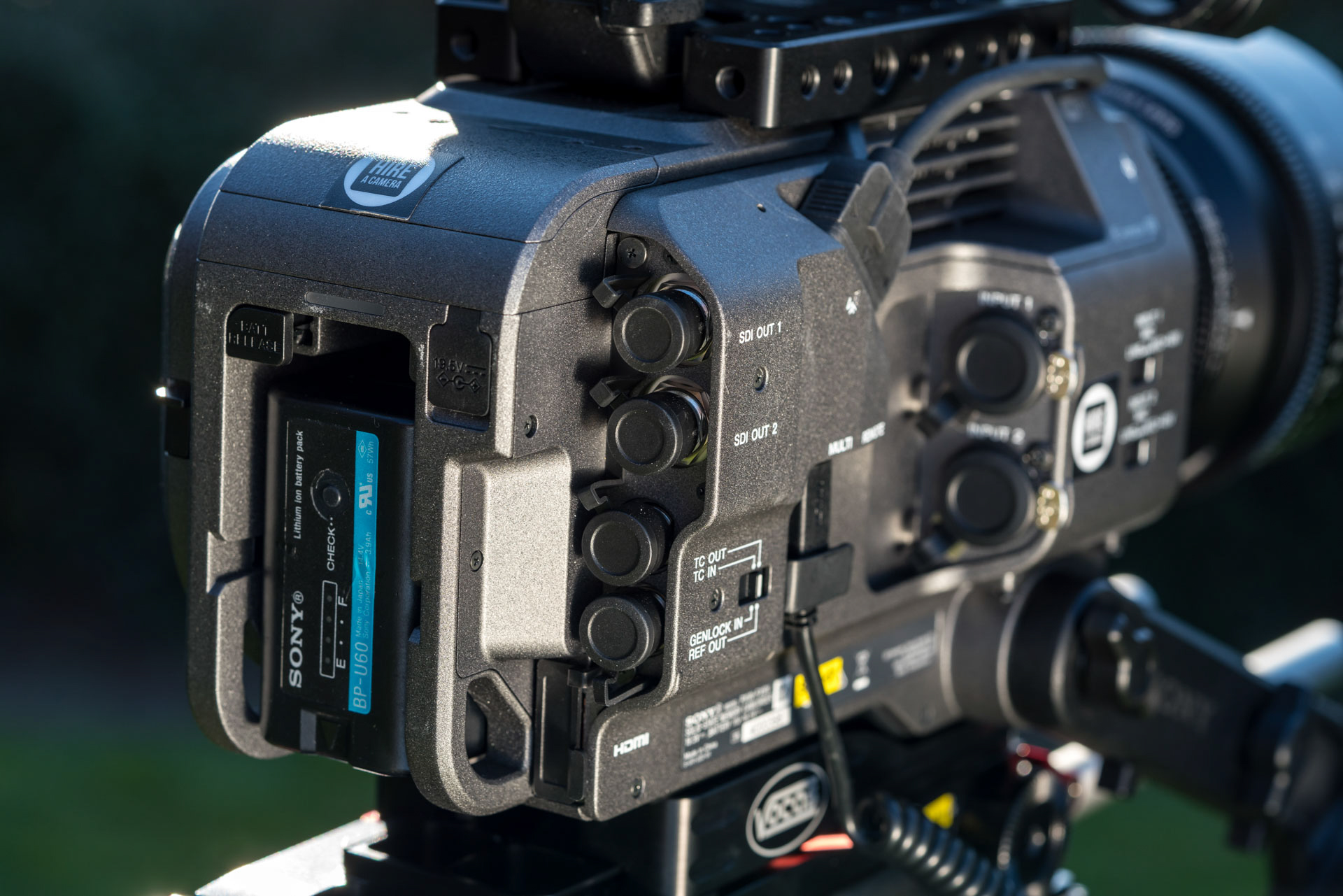
Thanks to the full frame sensor producing incredibly detailed, low-noise images, the FX9 is astonishing in terms of high ISO performance. It’s even very good at when you underexpose then dial up exposure in post. It’s a great sensor.
In terms of color, when you start using the FX9 you are faced with two different modes - Custom or CineEI. In Custom, it’s a regular video camera with standard colors and also S-Cinetone color technology borrowed from the Venice. This offers a good balance between standard colors and something more cinematic. This has better skin tones and retains more highlight detail. It’s useable right out of camera.
In CineEI, you get the maximum detail from the file for color correction and grading in post. You use EI ratings rather than ISO or Gain, and it allows you to change the effective ISO without altering dynamic range. You can also set a specific white balance and tint. Overall, Custom mode gives cleaner high-ISO files than Cine EI which benefit from some noise reduction.
The FX9 also offers HG for HDR workflow and S-Log3, in both CineEI and Custom modes. If you have the time and skills to grade it, S-Log3 offers the most dynamic range and slightly more realistic skin tones, with beautiful colors. It’s the best setting for the ultimate in control and quality, but S-Cinetone is not far behind at all.
Sony FX9: verdict
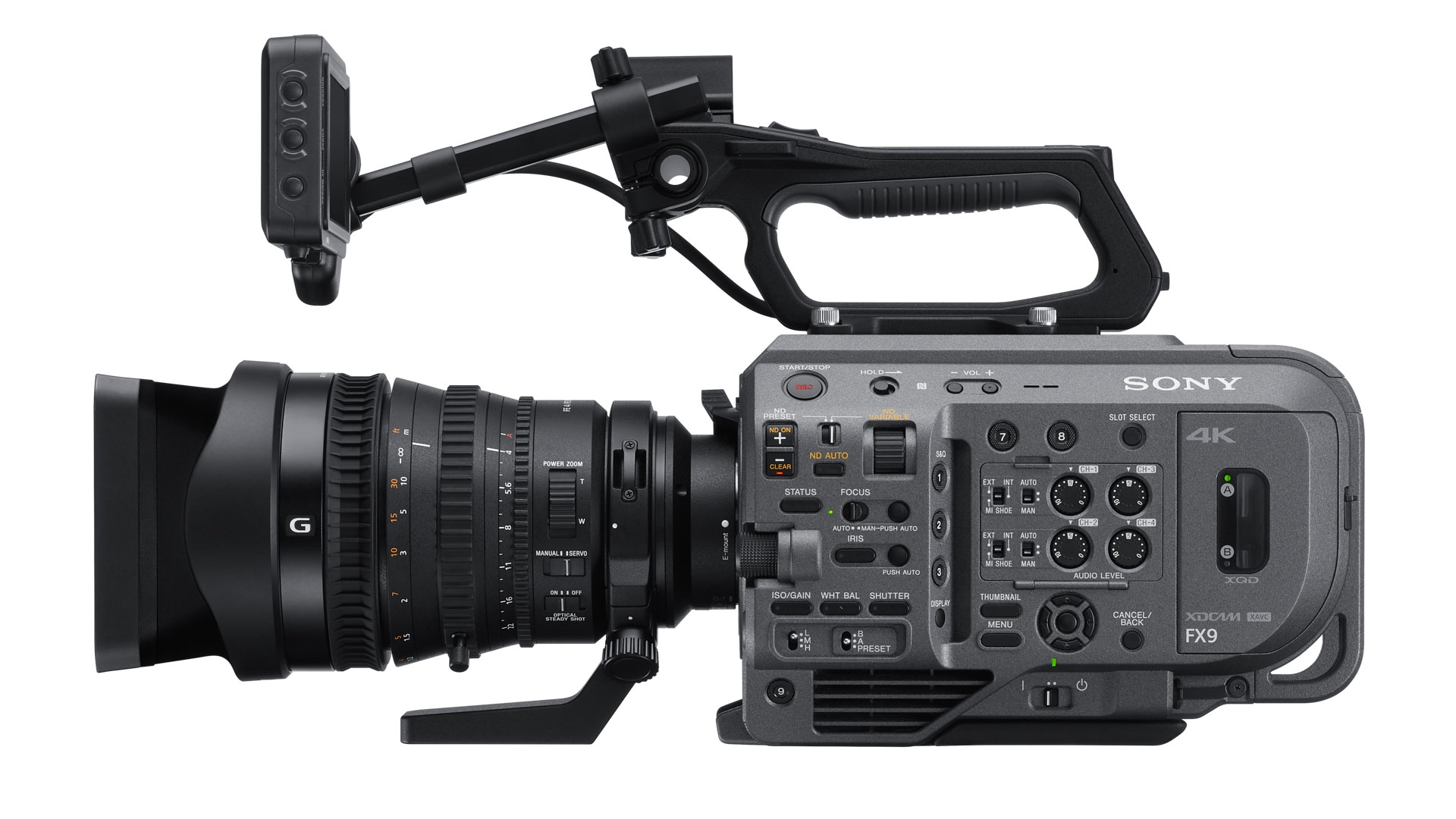
With the big new sensor, incredible autofocus and stunning image quality, the FX9 is the camera that many independent filmmakers will be taking a long look at. Although Sony says the FX9 does not replace the FS7 Mark II, it’s a natural upgrade.
The FX9 is better in virtually every way, especially in image quality and color, HDR spec and high ISO performance from the back-illuminated Exmor R sensor.
The FX9 can be used for live streaming, a documentary camera or cinema camera. And that’s easier than ever as the new autofocus system is excellent.
It’s cheaper than the Canon C500 but lacks internal Raw recording. But with the superbly sharp C4K footage in high bit rates and color depth, only the most critical of pixel-peepers would demand Raw.
The full-frame Sony PXW-FX9 is a fantastic cinema camera than can handle any situation with ease.
Read more
Adam Duckworth is an award-winning professional photographer and videographer based in the UK. He has worked for many top magazines, newspapers and corporate clients for more than 25 years. He was named SWPP UK Commercial Photographer of the Year, and is an Associate of the British Institute of Professional Photography. He has also worked for international publications like Motor Cycle News, Racer X, The Sunday Times, The Guardian, ZOO, Golf World, Today's Golfer, and Mountain Bike Action, among others.
